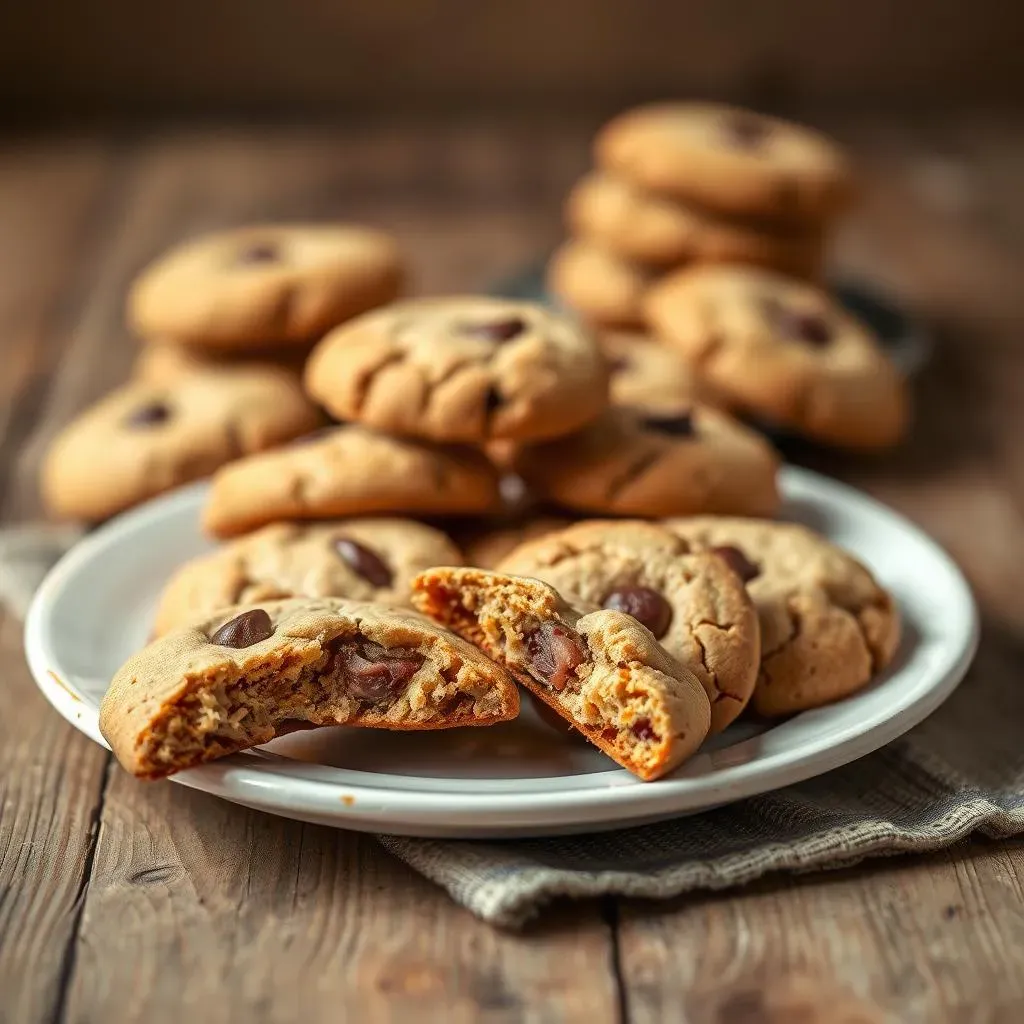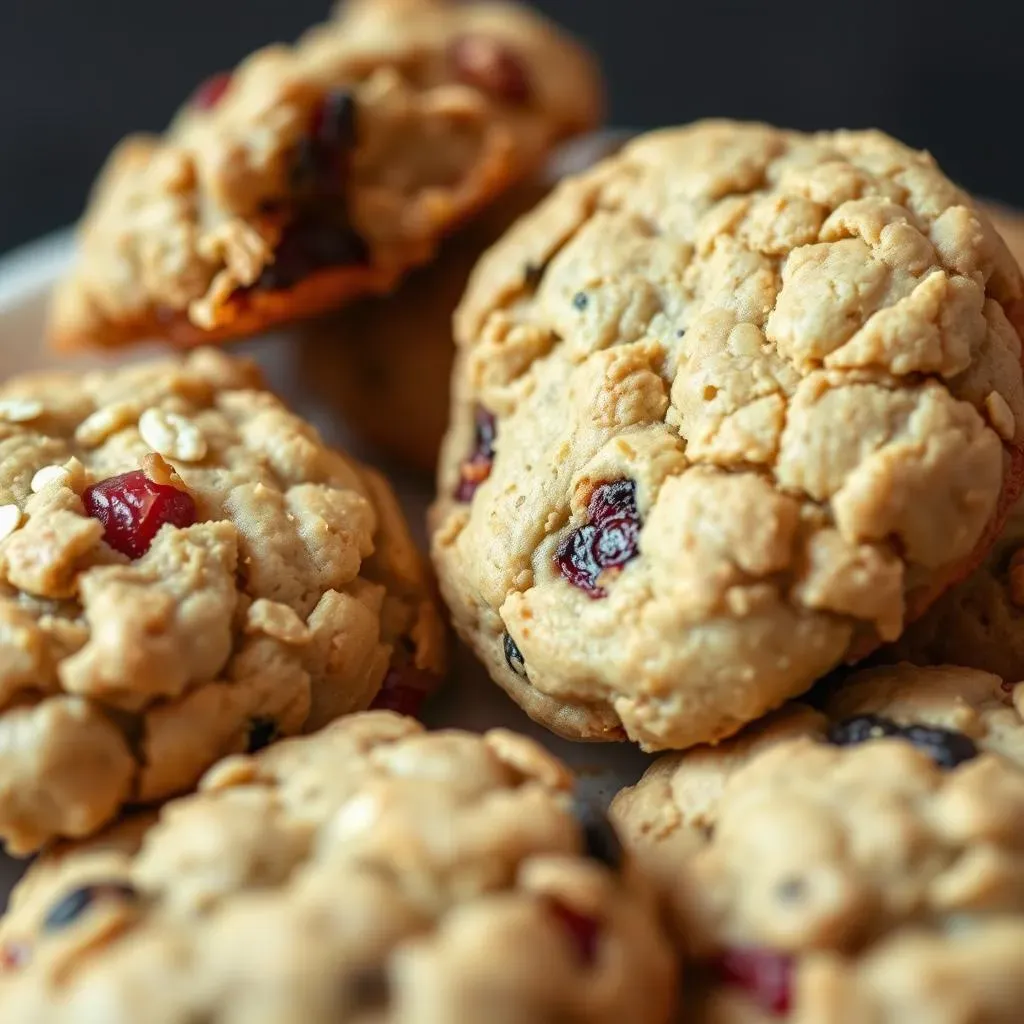Table of Contents
Ever found yourself staring longingly at a batch of freshly baked cookies, only to be sidelined by the thought of fat content? I get it. The struggle is real when you want a treat without the guilt. That's why I went on a mission to find the secrets to the best low fat cookies. Forget those dry, flavorless imitations; we’re talking about cookies that are still soft, chewy, and totally satisfying. This isn't just about cutting fat, it's about smart swaps and baking techniques that keep the taste and texture on point. In this article, I'll share the crucial things I've learned. We'll explore what makes a cookie "low-fat," which ingredients work best, and how to put it all together with recipes that will make you wonder if they’re really low-fat at all. Ready to bake some incredible, guilt-free goodies? Let's get started!
Understanding LowFat Baking: What Makes a Cookie "LowFat"?

Understanding LowFat Baking: What Makes a Cookie "LowFat"?
The Fat Factor: It's All About Reduction
Okay, so what does "low-fat" even mean when we're talking cookies? It's not about eliminating fat entirely because, let’s be real, fat plays a big part in that delicious texture and flavor we all crave. Instead, it’s about reducing the total amount of fat compared to a traditional recipe. Think of it like this: a regular cookie might be a greasy burger, while a low-fat version is like a lean turkey burger – still satisfying, just with less of the stuff you might be trying to cut back on. We're aiming for that sweet spot where you can enjoy a treat without feeling like you've gone overboard on the fats.
The idea isn't to make cookies that taste like cardboard. No one wants that. Instead, it's about being clever. It's about finding the right balance. We're looking at swapping out some of the traditional fats with ingredients that still provide moisture and structure, but with less fat. It is a bit of a science experiment, but a tasty one. It is all about making small tweaks that can lead to big changes in the final product.
The Science Behind the Swap
So, how do we actually achieve these low-fat wonders? Well, traditional cookie recipes usually rely heavily on butter or oil for their rich taste and soft texture. To dial that back, we need to get a little creative. Instead of using a full stick of butter, we might use half and replace the rest with something like unsweetened applesauce or Greek yogurt. These alternatives add moisture and help keep things tender, but without all that fat. It’s like a magic trick, but with baking instead of cards.
We also need to consider the type of fat we're using. Coconut oil, for instance, can be a good option in moderation because it adds a unique flavor and is a plant-based source of fat. However, it can be a bit higher in saturated fat, so we need to use it wisely. The key here is to be aware of what each ingredient brings to the table and make choices that align with our low-fat goals. It's all about making the best choices for our cookies, and for our bodies.
Ingredient | Traditional Role | Low-Fat Substitute |
|---|---|---|
Butter/Oil | Richness, Moisture | Applesauce, Greek Yogurt, Coconut Oil (in moderation) |
Full-Fat Dairy | Moisture, Flavor | Non-Fat Greek Yogurt, Almond Milk |
Top Ingredients for the Best LowFat Cookies: Swaps and Substitutions

Top Ingredients for the Best LowFat Cookies: Swaps and Substitutions
The Moisture Squad: Applesauce, Yogurt, and More
Okay, let's talk about the real MVPs of low-fat baking: the moisture providers. When you cut back on butter or oil, you need to replace that liquid somehow, otherwise, you are going to end up with sad, dry cookies. Unsweetened applesauce is a fantastic choice. It adds a touch of sweetness and a ton of moisture, keeping your cookies soft and chewy. Greek yogurt, especially non-fat, is another hero. It brings a bit of tanginess and a lovely, tender crumb to your cookies. These aren't just fillers; they're actually enhancing the final product, while keeping the fat content down. You'd be surprised how much of a difference these simple swaps can make.
But wait, there's more! Mashed banana or pumpkin puree can also step in for some of the fat. They each bring their own unique flavor and texture, so it's all about experimenting to see what you like best. For example, banana works great in oatmeal cookies, while pumpkin puree is awesome in spiced cookies. Remember, the key here is to use unsweetened versions so you can control the sweetness level and keep those calories in check. It's like having a secret weapon in your baking arsenal.
The Flour Power-Up: Whole Grains and More
Now, let’s talk flour. While all-purpose flour is the go-to for many recipes, switching to whole wheat flour or a blend can add some extra nutrients and fiber to your cookies. It's like a sneaky way to make your treat a little bit healthier without sacrificing taste. Whole wheat flour can sometimes make cookies a bit denser, so I often mix it with all-purpose flour for a better balance. Think 50/50 or even 75% all-purpose and 25% whole wheat, it's up to you.
Another great option to try is oat flour. It's super easy to make by just grinding up some rolled oats in a blender. It gives cookies a slightly chewy texture and adds a little bit of that oaty goodness. Plus, it's naturally gluten-free, if you're into that. Almond flour is another good one, especially if you want a lower-carb cookie. It adds a nutty flavor and a delicate crumb. Just be aware that these flours can absorb moisture differently, so you might need to tweak the liquid in your recipe. Baking is all about experimenting and finding what works best for you.
Ingredient | Why It's Great | Best Use |
|---|---|---|
Unsweetened Applesauce | Adds moisture, slight sweetness | Replaces some butter or oil |
Non-Fat Greek Yogurt | Adds moisture, tanginess | Replaces some butter or oil |
Whole Wheat Flour | Adds fiber, nutrients | Mix with all-purpose flour |
Oat Flour | Adds chewiness, gluten-free | Use on its own or mixed with other flours |
Baking the Best LowFat Cookies: Tips, Techniques, and Recipes

Baking the Best LowFat Cookies: Tips, Techniques, and Recipes
Mastering the Mix: Techniques for Success
Alright, so you've got your low-fat ingredients lined up, now comes the fun part: actually baking these cookies! One key thing I've learned is that the mixing process is super important. You don't want to overmix the batter, because that can make your cookies tough. Instead, mix the wet ingredients together first, then gently fold in the dry ingredients until just combined. It’s like you’re tucking them in, not wrestling them. This will keep your cookies light and tender. It’s a small thing that makes a big difference. Think of it like you’re trying to create a gentle, harmonious mix, not a chaotic mess.
Another thing to consider is the temperature of your ingredients. If your butter is too soft, or your yogurt is too cold, it can mess with the texture of your cookies. I've found that having your ingredients at room temperature is usually best. It helps everything mix together nicely and evenly. Also, don’t be afraid to chill your dough for a bit before baking. This helps prevent your cookies from spreading too much in the oven, giving them a nice, chewy texture. It’s like a mini-spa day for your dough, a little chill time before the heat.
Oven Know-How: Baking for Perfection
Now, let's talk about the oven. Every oven is a little different, so it's important to get to know yours. I always recommend preheating your oven properly and using an oven thermometer to make sure it's at the right temperature. This will help your cookies bake evenly. Also, don’t overcrowd your baking sheet. Give your cookies some space to breathe, otherwise, they might stick together. It’s like giving them their own personal bubble of space.
Another pro tip: keep a close eye on your cookies while they're baking. Low-fat cookies tend to bake a bit faster than traditional cookies, so you don't want to overbake them. Take them out of the oven when the edges are just set, and the centers are still a little soft. They’ll continue to bake as they cool on the baking sheet. It is all about timing. It is a bit like a dance, knowing when to take them out of the heat so they are not burnt.
Tip | Why It Matters |
|---|---|
Don't Overmix | Keeps cookies tender, not tough |
Room Temperature Ingredients | Ensures even mixing |
Chill Dough | Prevents excessive spreading |
Use Oven Thermometer | Ensures correct baking temperature |
Don't Overbake | Keeps cookies soft and chewy |
